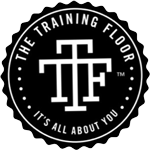Slow down and stretch!!!
Some of you who’ve been training with us have become more adapt to stretching more before and after a workout. Whether your getting a stretch in with our warm up or staying the last 5 minutes to break down to a stretch circle everyone seems to be getting it in. (except those running out a few minutes early!) Do you realize how important it is, or are you just going through the motions?
A study done by the Mayo Clinic found this:
Most aerobic and strength training programs inherently cause your muscles to contract and flex. That’s why regular stretching is a powerful part of any exercise program. Consider this:
- Stretching increases flexibility. Flexible muscles can improve your daily performance. Tasks such as lifting packages, bending to tie your shoes or hurrying to catch a bus become easier and less tiring.
- Stretching improves range of motion of your joints. Good range of motion keeps you in better balance, which will help keep you mobile and less prone to falls — and the related injuries — especially as you age.
- Stretching improves circulation. Stretching increases blood flow to your muscles. Improved circulation can speed recovery after muscle injuries.
- Stretching can relieve stress. Stretching relaxes the tense muscles that often accompany stress.
- Target major muscle groups. When you’re stretching, focus on your calves, thighs, hips, lower back, neck and shoulders. Also stretch muscles and joints that you routinely use at work or play.
- Warm up first. You may hurt yourself if you stretch cold muscles. Warm up by walking while gently pumping your arms, or do a favorite exercise at low intensity for five to 10 minutes. Better yet, stretch after you exercise — when your muscles are warm and more receptive to stretching.
- Pace yourself. It takes time to lengthen tissues safely. Hold each stretch for about 30 seconds, then repeat on the other side. Do each stretch three or four times.
- Don’t bounce. Bouncing as you stretch can cause small tears in the muscle. These tears leave scar tissue as the muscle heals, which tightens the muscle even further — making you less flexible and more prone to pain.
- Focus on a pain-free stretch. Expect to feel tension while you’re stretching. If it hurts, you’ve gone too far. Back off to the point where you don’t feel any pain, then hold the stretch.
- Relax and breathe freely. Don’t hold your breath while you’re stretching.
How often to stretch is up to you. As a general rule, stretch whenever you exercise. If you don’t exercise regularly, you might want to stretch at least three times a week to maintain flexibility. If you have a problem area, such as tightness in the back of your leg, you might want to stretch more often.
Hope that clarified some of your questions on why to stretch, now come to class and we can teach you how! 🙂
Even stretch at work!

-trainer Cat Heitz
